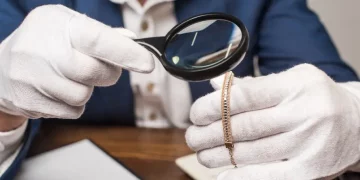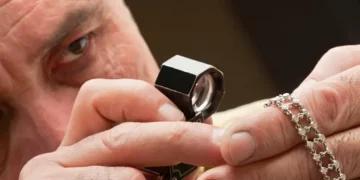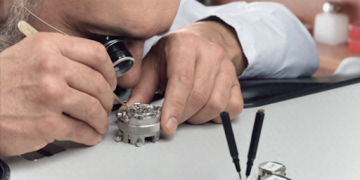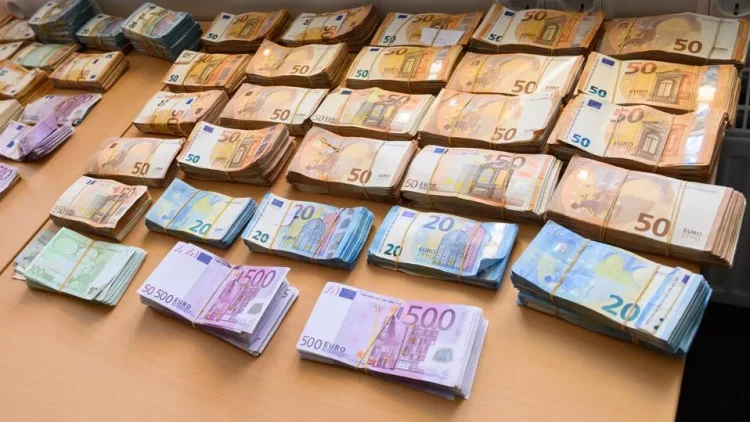The world of rare and valuable collectibles has long been shrouded in mystery and intrigue. While legitimate collectors spend years honing their expertise to authenticate, preserve, and trade precious items, there exists an underworld where unregulated, illegal, and counterfeit items thrive. This underground market, often accessed via the Dark Web, poses a growing concern for collectors, auction houses, museums, and even law enforcement. Among the many issues that arise from this hidden market, perhaps the most disturbing is the rise of counterfeit or illicit collectibles that no expert, no matter how skilled, will risk authenticating.
This article will delve into the seedy underbelly of the collectible world that thrives in unregulated spaces like the Dark Web. We will explore how dangerous and deceptive the market can be, the categories of collectibles that are most vulnerable to exploitation, and the red flags that experts look for when verifying the authenticity of such items. Additionally, we will uncover how this illicit market operates, the challenges it presents to both collectors and authorities, and what measures can be taken to protect oneself from falling victim to fraud or illegal activity in the world of collectibles.
What Is the Dark Web and How Does It Affect Collectibles?
The Dark Web is a part of the internet that is not indexed by traditional search engines and requires specific software, such as Tor, to access. Unlike the surface web, which is accessible to anyone with an internet connection, the Dark Web is intentionally hidden and is used for a variety of reasons, both legal and illegal. It has long been associated with illicit activities such as drug trafficking, illegal weapons sales, and cybercrime. However, in recent years, it has also become a hotbed for the trading of illicit collectibles.
While the mainstream market for collectibles is governed by experts, auction houses, and established verification processes, the Dark Web operates in a lawless space where such safeguards are absent. This means that everything from rare antiquities, fine art, luxury goods, to sports memorabilia, and even personal artifacts can be found, often in counterfeit or illicit forms.
For collectors, the Dark Web represents both an opportunity and a significant danger. Some individuals are drawn to the anonymity it provides, allowing them to purchase rare items without the scrutiny of traditional markets. However, this comes at a significant risk—many items listed on the Dark Web are fake, stolen, or illegal to own, making the process of collecting in this hidden market a treacherous and often criminal pursuit.
Unregulated Market Segments: The Appeal of the Dark Web Collectibles
While the market for legitimate collectibles is carefully curated and highly regulated, the Dark Web offers access to a variety of unregulated segments that appeal to a certain subset of collectors. These segments include:
1. Stolen Artifacts and Antiquities
One of the most concerning categories in the Dark Web’s collectible market is stolen artifacts and antiquities. These items, often taken from museums, private collections, or archaeological sites, are sold in a shadowy market where authenticity and ownership cannot be verified. For many collectors, the allure of acquiring a piece of history, no matter how it was obtained, is irresistible.
However, buying stolen artifacts is illegal and can have serious legal consequences. Additionally, many of these items are protected by international laws such as the UNESCO Convention, which seeks to prevent the illicit trade of cultural property. On the Dark Web, these regulations are entirely bypassed, and the value of such stolen pieces is determined not by their authenticity or historical significance, but by their ability to remain hidden.
2. Counterfeit Fine Art and Luxury Items
Fine art and luxury goods are another popular commodity on the Dark Web. The market for counterfeit art has exploded in recent years, with sophisticated forgeries being produced and sold to unsuspecting buyers. These counterfeit pieces often mimic the style of famous artists or designers, but upon closer inspection, they reveal subtle flaws or inconsistencies that only an experienced expert can identify.
Luxury items such as watches, handbags, and jewelry are also frequently sold on the Dark Web. While some of these items may appear to be high-quality replicas, they are often crafted with the intention of deceiving buyers. Sellers on the Dark Web may even offer counterfeit certificates of authenticity to make the sale seem more legitimate.
3. Fake Sports Memorabilia
Sports memorabilia has long been a popular collectible, with items such as signed jerseys, baseball cards, and championship rings fetching high prices at auction. Unfortunately, the Dark Web has become a breeding ground for counterfeit sports memorabilia. These items are often sold with forged autographs or misrepresented provenance, making it difficult for even experienced collectors to distinguish them from the real thing.
In the case of sports memorabilia, the lack of authentication and the unregulated nature of the Dark Web allow fraudsters to profit from unsuspecting buyers who are eager to add a rare item to their collection.
4. Historical Documents and Manuscripts
Another segment of the Dark Web’s collectible market involves rare historical documents and manuscripts. These items, such as letters, diaries, and ancient manuscripts, are often forged or stolen from libraries, archives, and private collections. Because they are often sold with little to no verification, it can be difficult to discern whether the item is genuine or fake.
Forgeries of important historical documents, like letters from famous figures or original manuscripts from renowned authors, can easily be passed off as authentic in the unregulated environment of the Dark Web. For collectors, the challenge is determining whether the item they are purchasing is truly a piece of history or just a well-crafted replica.

Verification Red Flags: How to Spot Dangerous Collectibles
For legitimate collectors, the most important aspect of acquiring rare items is ensuring that they are authentic and legally obtained. Unfortunately, in the world of Dark Web collectibles, the usual processes of authentication and verification are absent. As a result, it’s essential to be aware of the red flags that can indicate a dangerous or fraudulent collectible.
1. Lack of Provenance
Provenance refers to the history of ownership of an item, and it is a critical factor in verifying its authenticity. On the Dark Web, the lack of provenance is a major red flag. If a seller cannot provide credible documentation about where the item came from or how it was acquired, it is likely to be a counterfeit, stolen, or illegal item.
A legitimate collectible will often have detailed records, certificates of authenticity, and sometimes even the names of previous owners. Without these details, there is a high probability that the item in question is part of an illicit trade.
2. Overly Attractive Prices
While the appeal of acquiring rare items at lower prices is understandable, suspiciously low prices on the Dark Web should raise immediate concerns. Authentic art, rare antiquities, or luxury items typically carry high price tags due to their rarity and desirability. If an item is being sold for a fraction of its estimated market value, it could be a sign that the seller is offering a counterfeit, a stolen piece, or an item with forged documentation.
Legitimate sellers will price their items according to market standards, and steep discounts should be regarded with skepticism.
3. Lack of Authentication or Expertise
One of the biggest dangers in the world of Dark Web collectibles is the absence of third-party verification or expert authentication. When purchasing items online—especially rare or valuable ones—relying on trusted experts or reputable auction houses is essential. If a seller refuses to allow independent verification of the item or insists that their word is enough, it is a major warning sign.
Reputable auction houses and galleries will employ experts who can authenticate items and ensure their legitimacy. If the seller on the Dark Web cannot provide any form of authentication or refuses to let experts examine the piece, it is best to avoid the purchase altogether.
4. The Use of Cryptocurrency and Untraceable Payments
Another common characteristic of transactions on the Dark Web is the use of cryptocurrency and untraceable payment methods. While cryptocurrencies like Bitcoin may be legitimate forms of payment, they are often used on the Dark Web because of their anonymity and inability to trace transactions. When purchasing collectibles from unregulated markets, the use of cryptocurrency as the only form of payment should be considered a red flag.
Legitimate marketplaces or auction houses will offer secure and traceable payment methods. If a seller insists on using untraceable methods, it’s likely a sign that the transaction is illicit or fraudulent.
The Consequences of Buying from the Dark Web
For collectors, the consequences of buying illicit or counterfeit collectibles from the Dark Web can be severe. In addition to the financial loss of purchasing a fake or stolen item, there are legal ramifications as well. Owning stolen art or artifacts can result in criminal charges, as these items are often protected by international laws. Furthermore, collectors who unwittingly purchase counterfeit items may face the loss of both their investment and their reputation within the collector community.
Beyond the legal risks, there is also the issue of authenticity. If an item turns out to be fake, it cannot be sold through legitimate channels, and its value will plummet. For many collectors, the loss of a rare item—and the inability to prove its authenticity—can be devastating both financially and emotionally.
Conclusion: Navigating the Dark Web Collectibles Market Safely
While the allure of acquiring rare collectibles from the Dark Web may seem tempting to some, it is a path fraught with dangers. The unregulated and secretive nature of this market makes it a hotbed for counterfeit, stolen, and illicit items that can ruin a collector’s reputation and investment. The red flags outlined in this article serve as a reminder of the risks involved in purchasing from these shady spaces.
For collectors, the key to avoiding these dangers lies in vigilance. Always ensure that items are properly authenticated, and never bypass expert verification for the sake of anonymity or a good deal. If something seems too good to be true, it probably is. By staying aware of the risks and protecting oneself from falling into the trap of the Dark Web, collectors can continue to enjoy their passion for rare and valuable items in a safe and legitimate manner.

















































